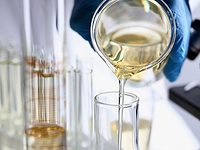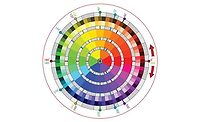Understanding Cool Coatings for Automotive

Energy prices have skyrocketed over the last several years, and the “green” movement is clearly in full swing. Energy is a precious global commodity, which some areas of the world are taking dramatic steps to conserve. In fact, several regulations have come into U.S. law to improve our overall environment and to reduce greenhouse gases by lowering CO2 emissions. A proposal by the California Air Resource Board (CARB) suggests that automotive manufacturers and their coatings partners develop cool coatings in an effort to save fuel by lowering the necessary compressor size of an automotive air conditioning unit. The coating is only part of the equation to lower the interior temperature of a vehicle. The windshield also plays a significant role in increasing the interior temperature. In addition to cool coatings legislation, CARB is also imposing regulations on window glass. A study by the National Renewable Energy Laboratory showed a potential of 11 gallons per year of fuel savings could be achieved if the usage of the air conditioning was reduced by 26%.(1)
Introduction
Although cool coatings are not new to other markets such as metal roofing, they are new to the automotive market. You may have noticed recently that automotive finishes last a very long time. The luster and shine that you continue to see year after year was developed through extensive testing by car manufacturers and their coatings partners. Automotive and coatings manufacturing associations have been working closely with CARB to develop a regulation that will work in a short time frame, will be close to consumer color preferences, and will provide the positive impact to the environment that everyone seeks.Cool coatings have been used for flat industrial roofs for over 10 years. Data has shown that a building with a cool roof coating can save 11% in energy from reduction of heat build up when compared to a non-cool coated roof.(2) The EPA now regulates that flat roofs must have a total solar reflectance of over 70%, and the only coatings colors that can meet the specification are white and silver. Over the last few years, the EPA has now mandated steep slope roofs have a total solar reflectance of at least 25%. Having this lower requirement has allowed coating manufacturers to develop a wide range of colors.
White and light-colored vehicles do not absorb like darker colors do, which is the same as the roof concept. The reduction in heat over time also translates into longer durability.(3) Because of the longer durability, white-colored cars were the last to convert to a basecoat/clearcoat process to extend coating longevity. White and light-colored vehicles are the preferred color selection for people living in warmer climates.
School buses started painting roofs white back in the 1980s because it lowered the inside temperature of the bus by 10 °F.(4 )This translated to an increase in comfort level of student passengers, especially in southern states. Recently some bus manufactures have made white roofs standard on most models.
In a draft proposal, CARB has stated that if the roof is painted with a highly reflective coating, the rest of the vehicle can be of a non-cool color. This opens the door for more autos styled with white and silver roof options.

Composition of Solar Energy
Even though we can see the sun as a fireball in the sky, over 50% of its energy is invisible. Solar energy spans over three light spectra (Figure 1). Ultraviolet light represents 5% and can be found in the range of 300-400 nanometers. The visible and near-infrared make up the majority of the spectrum ranging from 400 to 2,500 nanometers.Most of the energy that is absorbed from the sun comes from the near-infrared range of the energy distribution. The total solar reflectance can be calculated by the addition of the reflectance in each of these regions. The measurement is represented as a decimal or a percentage. For cool coatings, the best method to measure the reflectance was ASTM E 903; however this method was retired and a new one is being written. It is anticipated that the new method will be developed by the time any legislation is place.

How Cool Coatings Work
First, let’s look at a typical automotive coating system. A metal body consists of a phosphate layer for corrosion protection, an electrocoat layer, a primer to give chip resistance and to protect the electrocoat from UV degradation, a basecoat for color, and a clearcoat to protect from various environmental elements such as acid rain. Figure 2 shows an example of the layering system and the relative thicknesses.There are two methods for making a cool coating. The first method is to make the coating as reflective as possible. As mentioned previously, white and light silver colors are best at reflecting the light. The worst color is black because the black pigment absorbs the energy from the sun and causes heat build up. Most white and silver colors have a reflectance range of 50% to 70%, whereas black has a reflectance level of around 4%.
Replacing the standard black with an infrared (IR) reflective black allows the coating to reflect more of the sun’s energy. Depending on the type of reflective black pigment, the total solar reflectance can be increased in a range of 15% - 40%. This is great news but the color is disappointing – a greenish brown that has nowhere near the “jet” factor of current blacks offered by auto manufacturers. This class of pigments is being looked at to see if it can be added to the pigment portfolio as a tint to colors.
Most organic colored pigments are transparent and are already considered “cool.” Coatings companies are looking at all IR reflective pigments to see if they can be used as substitutes for current pigments that are not considered cool.

A study conducted using the eggplant effect showed that the reflectivity could be increased dramatically by using the transparent black pigment in the basecoat and the reflective black in the primer. The study used control systems consisting of standard black basecoat, dark gray primer, light gray primer and white primer. They were compared to a cool black basecoat, cool dark gray primer and cool light gray primer. The study did conclude that the IR pigments are an improvement over conventional black primer, but they still are not as good as white for reflecting the energy.

Disadvantages of Cool Colors
There are three reasons cool coating may not be the best fit for the industry. The first is that the cost of cool coatings will be higher because the transparent black pigment is weaker in hiding power and costs up to 60% more. The cost impact depends on how much black is used in a formula and, for an all black formula, the price could be double or more. The second reason is if you have to spray it over a light or white primer, more coating may be required to get proper hiding, thus further increasing costs. This could negate the positive environmental impact of cool coatings. The third reason is that the cool coatings could impact the Integrated Processes (also called Compact Processes), which shrink the coating process by taking an oven bake out of the operation. In theory, cool coatings should work even in an Integrated Process, but more research needs to be done to make sure the benefits of a compact process are not negated by imposing cool coatings regulation.
Moving Forward
The best way to bring cool coatings to the market is to develop them from the ground up. New colors are being styled in cool technology. The color space has shifted dramatically from current colors, but the change is unique and refreshing. Figure 5 shows samples of cool colors that are being shown in BASF’s 2009 trend, which would be available for the 2012/2013 model year.In addition, the true benefit of cool coatings needs to be calculated to see if the benefits are real and do not negate the improvements the automobile manufactures have been bringing to their facilities. CARB has scheduled a hearing in June to review and vote on the proposed legislation. Automobile associations are waiting for a cost benefit study from CARB to compare with their own studies on cool coatings and how it impacts Integrated Processes. The fate of cool coatings will be known once these studies are concluded. In the meantime, more research will be conducted into cooler coatings for automotive application.
Air Resources Board - Breaking News
Revised Draft Regulation – AB 32 Cool Cars Standards and Test ProceduresThe Air Resources Board revised draft regulatory language has been posted. It can be found on ARB’s website at www.arb.ca.gov/cc/cool-paints/cool-paints.htm or may be requested from ARB’s Emission Research and Regulatory Development Branch at (626) 575-6632.
Of note, the proposal now specifies solar control requirements only for new vehicles windows (glazing). The original proposed regulation contained requirements for both vehicle paint and windows to improve their ability to reflect heat from the sun.
Staff has also changed the glazing requirements from a reflective (Rds) to a Total Solar Transmission (Tts) specification. This metric more closely aligns with the proposal’s goal of limiting solar transmission into the vehicle.
In an effort to get the newest draft of the regulation out to stakeholders some numerical values are not currently indicated in the draft regulation. The intent is to provide the framework of various compliance options. The numerical value will be specified in the final draft of the regulation which will be released 45-days prior to the June 25-26, 2009 Board Hearing.
For more information about this rulemaking please visit our website: www.arb.ca.gov/cc/cool-paints/cool-paints.htm or contact Dr. Marijke Bekken, Staff Air Pollution Specialist, by email at mbekken@arb.ca.gov or Sharon Lemieux, Manager, at (626) 575-7067 or by email at sclemieu@arb.ca.gov.
The ARB has set up an electronic list serve to provide updates on the implementation of the AB 32 programs. If you want to receive notification by email when information relating to AB 32 is posted on the web, please sign up for the climate change list server at www.arb.ca.gov/listserv/listserv_ind.php?listname=cc For those who wish to receive electronic notifications only for the cool pain and glazing item, select the list entitled “cool-paint”.
Looking for a reprint of this article?
From high-res PDFs to custom plaques, order your copy today!







